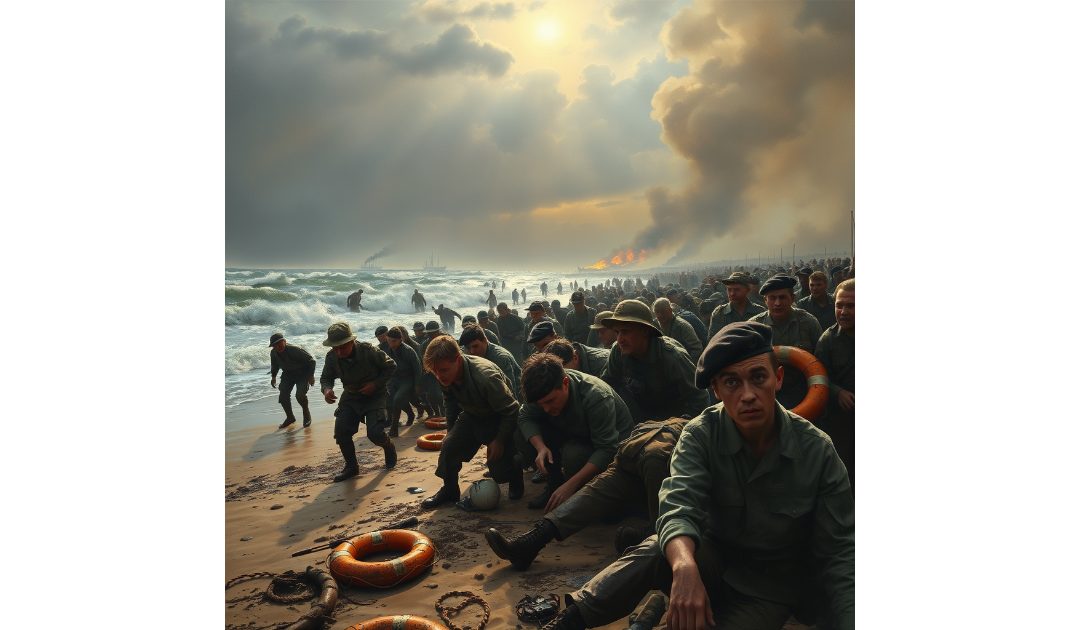In the annals of World War II, few events stand out as starkly as Operation Dynamo, the miraculous evacuation of Allied soldiers from the beaches of Dunkirk, France. This remarkable episode, often referred to as the “Miracle of Dunkirk,” not only exemplifies the spirit of resilience and unity but also marks a pivotal moment in the history of the war effort.
In May 1940, the German army launched a blitzkrieg across Europe, swiftly conquering territory and leaving Allied forces reeling. The rapid German advance through the Ardennes forest and the subsequent encirclement of Allied troops in Belgium and northern France created a dire and precarious situation. By late May, over 400,000 British and French troops were trapped on the beaches of Dunkirk, at the mercy of the approaching German forces.
The geographic position of Dunkirk, bordered by the sea and the advancing enemy, meant that conventional evacuation through land routes was impossible. The situation was desperate, and without immediate intervention, the bulk of the British Expeditionary Force, along with French and other Allied troops, faced capture or annihilation.
The British government, under the leadership of Prime Minister Winston Churchill and with the assistance of Vice Admiral Bertram Ramsay, devised an audacious plan to evacuate the stranded soldiers. Code-named Operation Dynamo, the mission aimed to rescue as many troops as possible using every available seafaring vessel, from naval destroyers to civilian fishing boats.
On the 26th of May, 1940, Operation Dynamo was officially launched from Ramsay’s headquarters beneath Dover Castle. The initial hope was to evacuate around 45,000 soldiers over two days; however, the operation extended over nine days, concluding on the 4th of June.
One of the most iconic aspects of Operation Dynamo was the involvement of the “Little Ships,” a flotilla of over 800 civilian boats that played a crucial role in the evacuation. These vessels, ranging from fishing boats and pleasure yachts to lifeboats and ferries, were manned by both naval personnel and civilian volunteers, braving treacherous waters and enemy fire to ferry soldiers from the beaches to larger ships waiting offshore.
This civilian effort was crucial in the success of the operation, as the shallow waters near Dunkirk prevented larger ships from reaching the beaches directly. The bravery and determination of these civilian sailors epitomised the “Dunkirk spirit,” a term that has since come to symbolise courage and solidarity in the face of adversity.
Despite relentless attacks from the German Luftwaffe and challenges such as rough seas and logistical constraints, Operation Dynamo succeeded beyond any expectations. Over the course of nine days, a total of 338,226 soldiers were evacuated from Dunkirk to England. This included 198,000 British and 140,000 French troops, ensuring that a significant portion of the Allied fighting force lived to fight another day.
While the operation was undoubtedly a military withdrawal, it was perceived as a triumph of human spirit and cooperation. The evacuation of Dunkirk provided a morale boost to Britain and the Allies, reinforcing the determination to continue the fight against Nazi Germany.
In the wake of Operation Dynamo, Winston Churchill delivered his famous “We shall fight on the beaches” speech, stirring the hearts of the British people and galvanising the nation for the trials ahead. Dunkirk was not a victory in the traditional sense, but it was a testament to strategic ingenuity and collective heroism.
The legacy of Operation Dynamo endures, serving as a powerful reminder of what can be achieved when individuals unite for a common cause. The “Miracle of Dunkirk” remains entrenched in the collective memory as a symbol of hope and resilience, a narrative of salvation against overwhelming odds.

